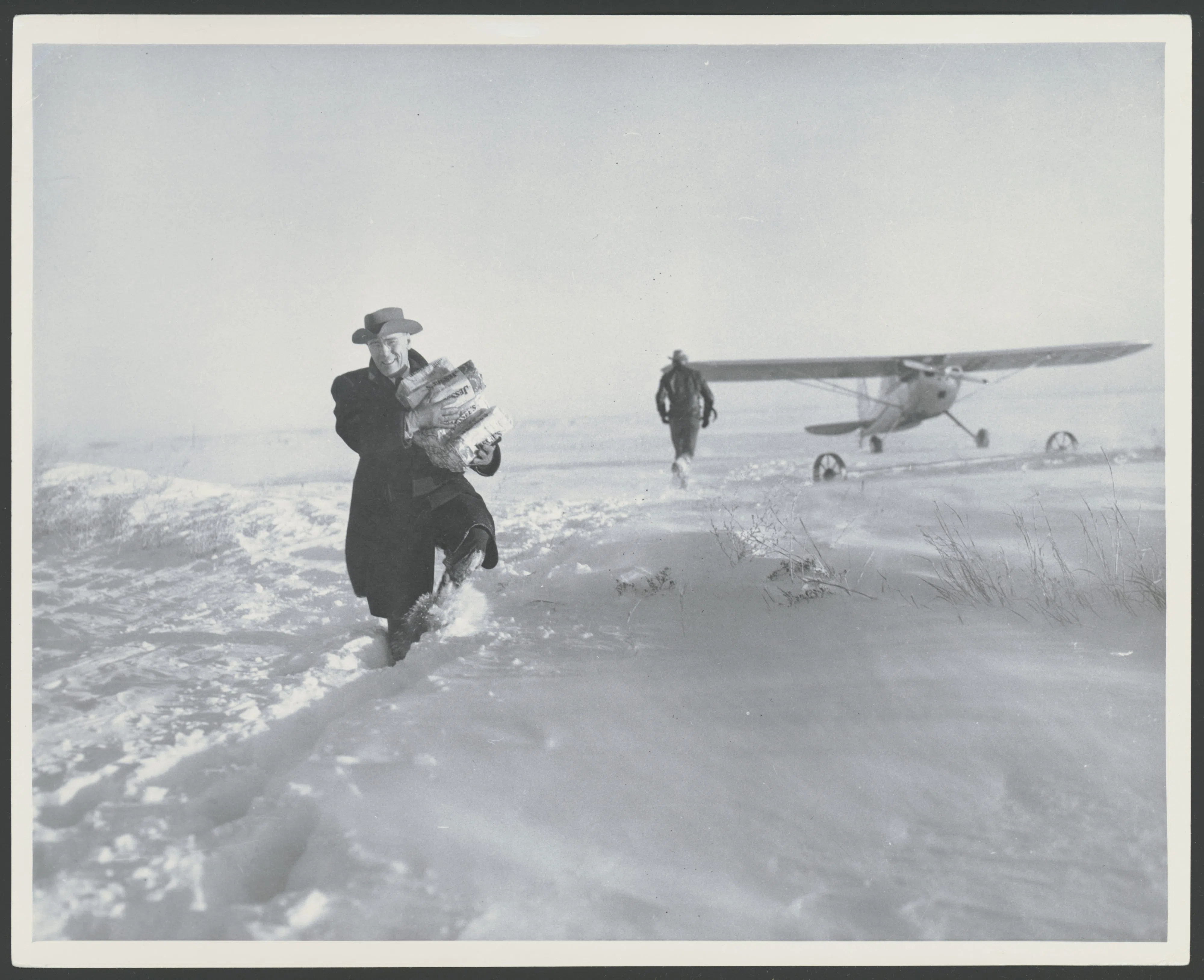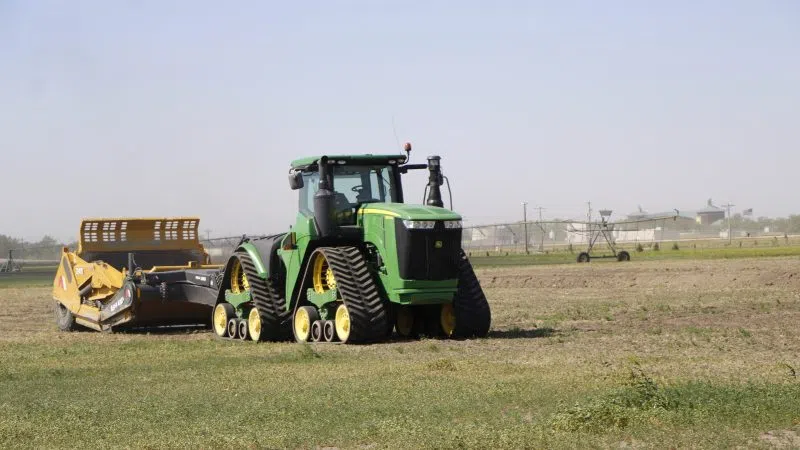
A man carrying bread that was delivered by airplane after the Blizzard of 1949. (History Nebraska, 6690, Courtesy)
NEBRASKA — It was one of the worst blizzards the Great Plains had ever seen, some consider it to be the worst blizzard of the century.
The blizzard of 1948-49 was not a single storm, but a series that lasted from December 1948 to January 1949, with the worst portion occurring Jan. 2 through Jan. 5.
In total, 18 snowstorms in 27 days impacted the Great Plains between December and January. Temperatures dropped as low as 40 degrees below zero and the snowfall ranged from 12 to 40 inches, three to eight times the normal four to eight inches.
Conditions were benign enough on Jan. 1, 1949.
Temperatures in central Nebraska were in the mid-30s. The state forecast had called for, “cloudy with light snow.” It seemed like a welcome relief after storms had started in November and lasted through December.
The system that would spawn the blizzard of 1949 began as a low-pressure air mass over central Oklahoma. The system underwent cyclogenesis, and it rotated counterclockwise over an area that was hundreds of miles wide.
The southern side was impacted by heavy rains and mild temperatures. The northern side, chilled by artic air, was primed for a historic storm.
On Sunday, Jan. 2, 1949, the snow began to fall. It kept falling for three days, the wind added to the misery as it howled mercilessly at 50 mph with gusts up to 70 mph.
What happened next is the reason the memory of this storm lives on.
Instead of continuing its eastward track, the storm system not only slowed to a halt, but it also doubled back on itself several times, areas of western Nebraska were hit again, while extreme areas of eastern Nebraska were left untouched.
The result, as the World-Herald Magazine put it, “one of the worst storms in the history of the West, a massive siege that locked down parts of 13 states in a deadly vice of cold, drifting snow, bitter winds and below zero temperatures for seven weeks.”
Areas of Wyoming, Colorado, North Dakota, South Dakota, Kansas, Nebraska, Nevada and Utah were now buried under snow drifts as large as one story buildings.
The blizzard would take the lives of over 100 people, as well as 500,000 head of livestock. The conditions deteriorated so quickly many people were trapped in their vehicles or alone in their homes.
A 95-year-old woman in Gordon was found frozen to death, alone in her home.
Those with more winter experience stayed in their vehicles but recalled, “frost an inch thick forming on their vehicles.” Those who held out recalled snow being driven through the key holes and door cracks by the howling winds.
There were stories of survival. One man survived buried under a snow drift 20 feet deep for 63 days. A woman trapped under another snow drift in temperatures 20 degrees below zero gave birth to a healthy son, according to the World Herald Magazine.
After the snow fell, the danger was not over. Thousands of people were still trapped in their rural homes and their remaining livestock was in jeopardy of starving since the ranchers could not travel to get food.
The only reliable transportation was by air. The United States Air Force launched Operation Haylift, also known as Hayride, the goal to deliver supplies and food to the Midwestern states and threatened livestock.
According to the Air Mobility Command Museum, “The 2151st Rescue Unit at Lowry Air Force Base, Colo., began to air drop food and medicine to stranded travelers and isolated residents on Jan. 3. For the next 10 days, the unit flew C-47, C-82, L-5 and H-5 aircraft over snow covered portions of Colorado, Wyoming and Nebraska.”
The C-47s were able to carry a payload of 2.5 tons, the C-82, the “Flying Boxcar,” was able carry 4.5 tons. Air Force personnel worked with civilians to spot areas which needed supplies and literally kick them out of the door. Spotters were civilians from the local area who knew which ranches were in danger. At the sound of a buzzer, hay was shoved out the back of the aircraft.
On Jan. 29. 1949, due to the number of roadway and railways still block by snow, President Harry Truman declared the western states a disaster area and authorized federal assistance. Disaster Force Snowbound was established in Omaha on Feb. 3, 1949.
In total, Operation Snowbound saved 4,011,184 cattle from starvation, freed 243,780 snowbound people, cleared 115,138 miles of roadway, employed 1,600 pieces of heavy equipment run by a 6,000 strong workforce, according to a Nebraska Educational Telecommunications article.
The damage from the storm, however, was widespread. “Nebraska, probably the hardest hit of all the storm states, estimated its stock loss at 65,000 cattle, 45,000 sheep and over 5,000 hogs. Storm damage to roads and highways was set at over $2.5 million. Snow removal alone cost $5 million. Overall, the loss to the state of Nebraska was estimated at over $35 million,” according to a World Herald Magazine written in 1969.
The blizzards of 1948-49 remain some of the most violent winter weather episodes in Nebraska’s history.
A Mrs. Vernon Chicoine of Chadron would write about the storms, “Nothing but spring could break the hold, melt the snow, and carry it off to the sea. Leaving just a memory of the blizzard of ’49.”














